In May of 2020, we sold our house, moved into a 5th-wheel RV, and began life as full-time RV nomads. With a few years of travel under our belt, we feel like we have a pretty good idea of what works and what doesn't - for us. And planning our year in advance is solidly in the "what works" column.
In this article, we share why we make our travel plans a year in advance, tips for RV travel planning, and some of the RV trip planning tools we find helpful.
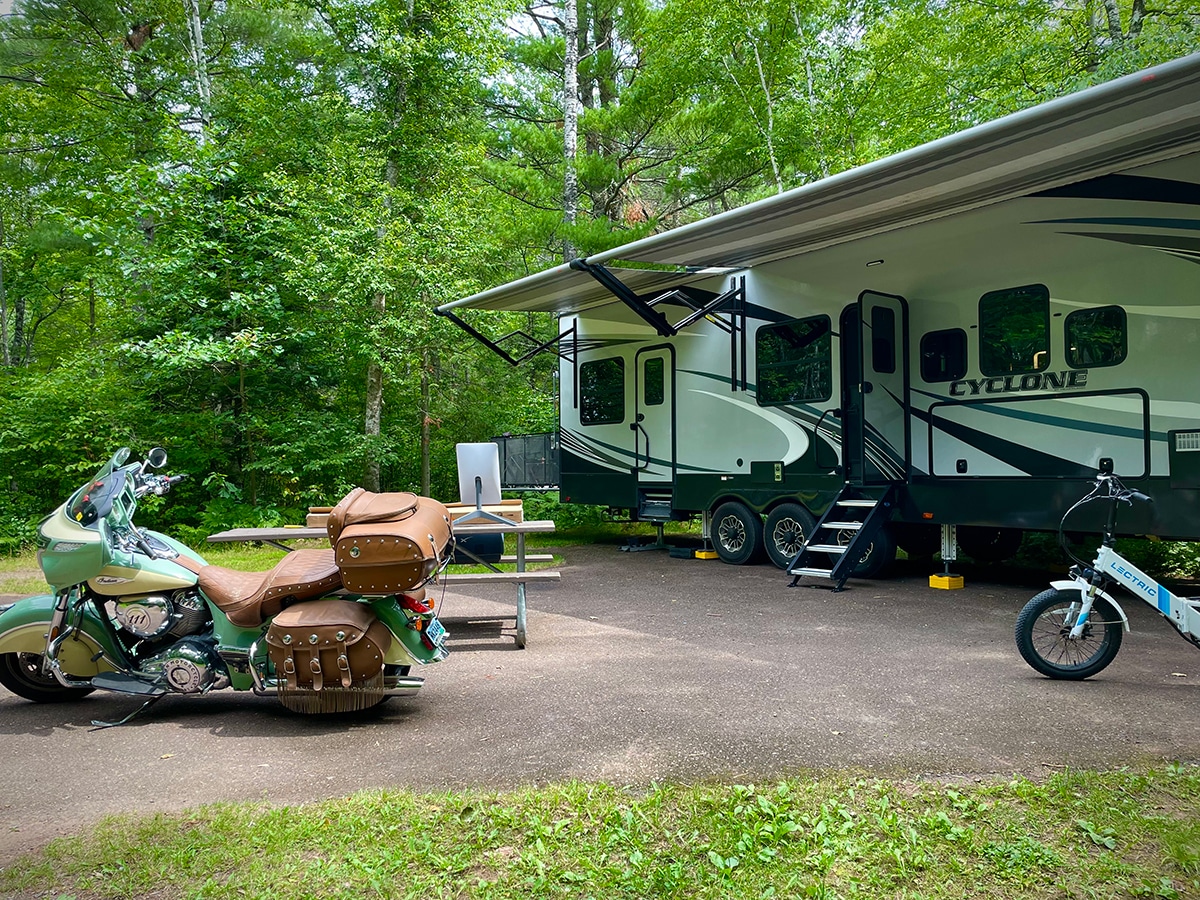
Jump to:

+ Subscribe to my newsletter for new and exclusive recipes in your in-box every month! As a full time traveler, living, working, cooking, and baking from a 5th wheel RV, it's also where I share our experiences of life on the road.
There are so many ways to live life on the road, and all of them fascinate me. So let's just start with the most important thing...
What's the Most Important RV Trip Planning Tip?
Figure out what works for you.
There are a lot of full-time RVers, vanlifers, and overlanders who are fully or partially spontaneous with their travel plans. A quick clarification in terms:
- The term "vanlifer" (obviously) refers to people who live in a van. Some are equipped with more storage, technology, and creature comforts than you thought possible in such a small space. Others are as rustic as you can imagine.
- Overlanders typically live in a jeep or truck, but some simply pack what they can on a motorcycle or bicycle.
On one of our trips to Alaska we saw several people who were spending a couple of years on a bicycle riding from Alaska to the tip of South America. These incredible people are roughing it on a level completely foreign to us.
We live on the not-so-minimalistic side of full-time travel.
Yes, downsizing from the typical middle class suburban home we lived in for 16 years to a 400 square foot RV required us to pair down our belongings in a significant way.
But, our life could hardly be described as roughing it. 😊 Over the past 20 months, we've transformed our little home on wheels into a comfortable haven that's equipped for our day-to-day life in pretty much every way.
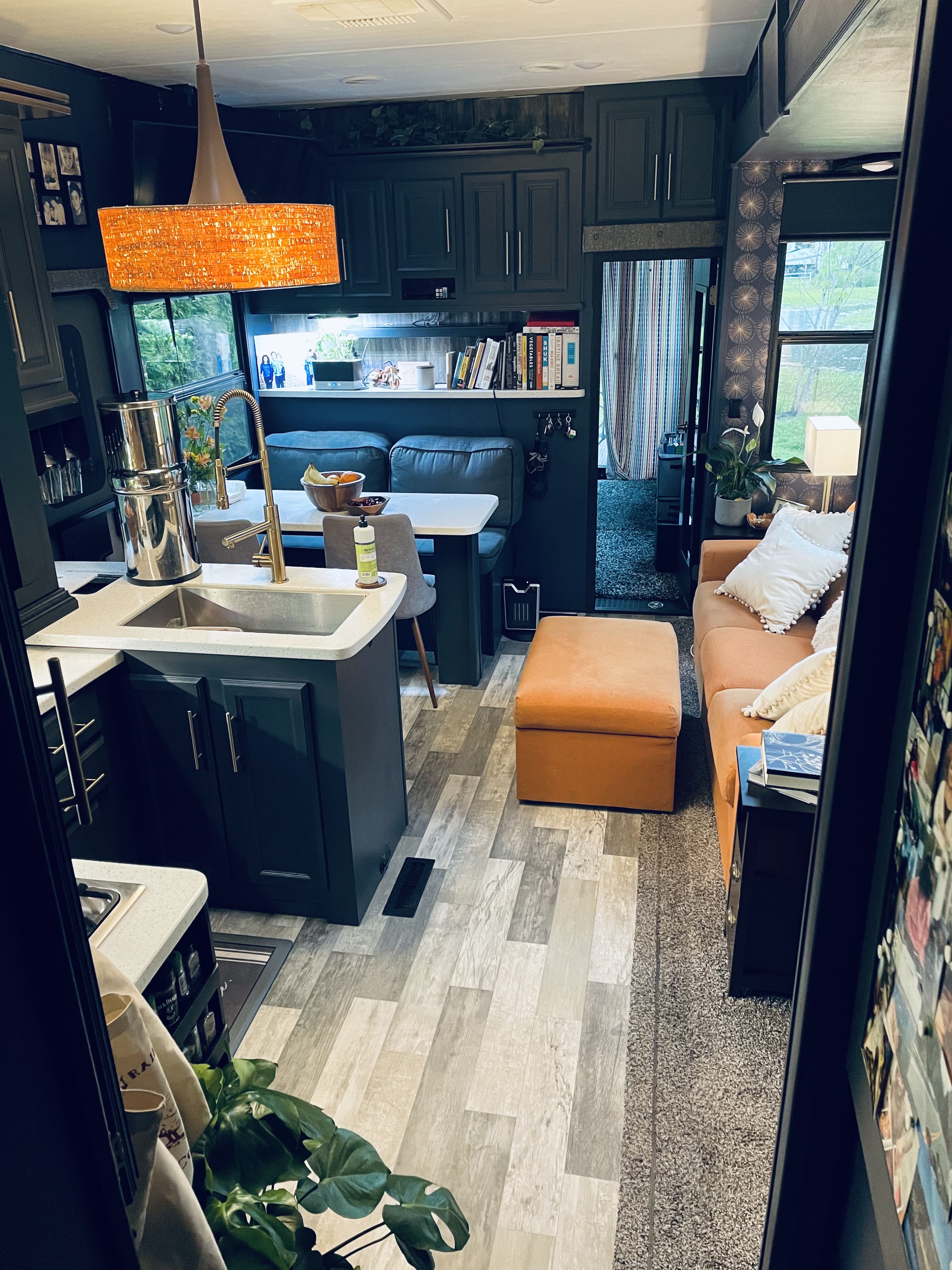
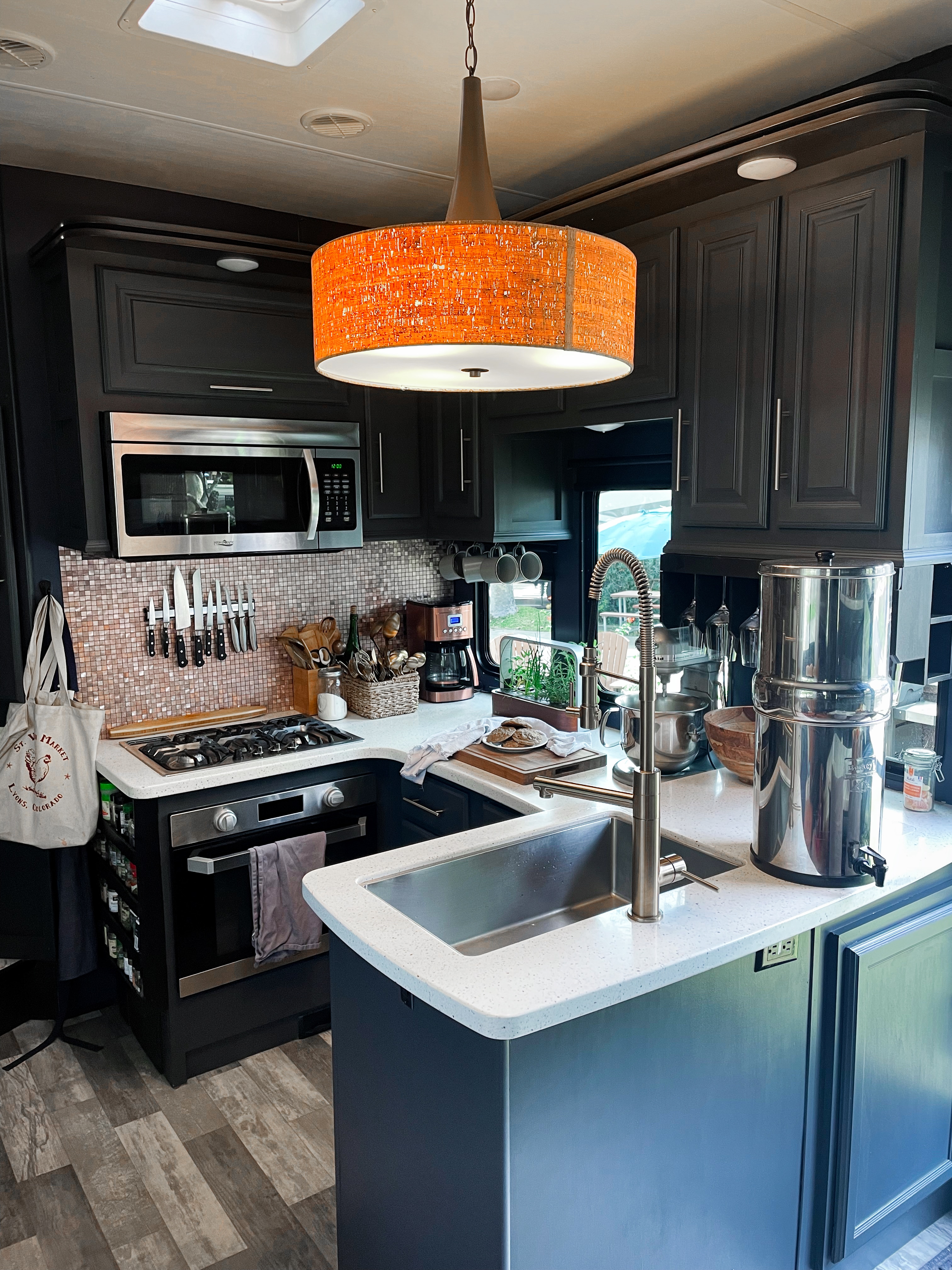
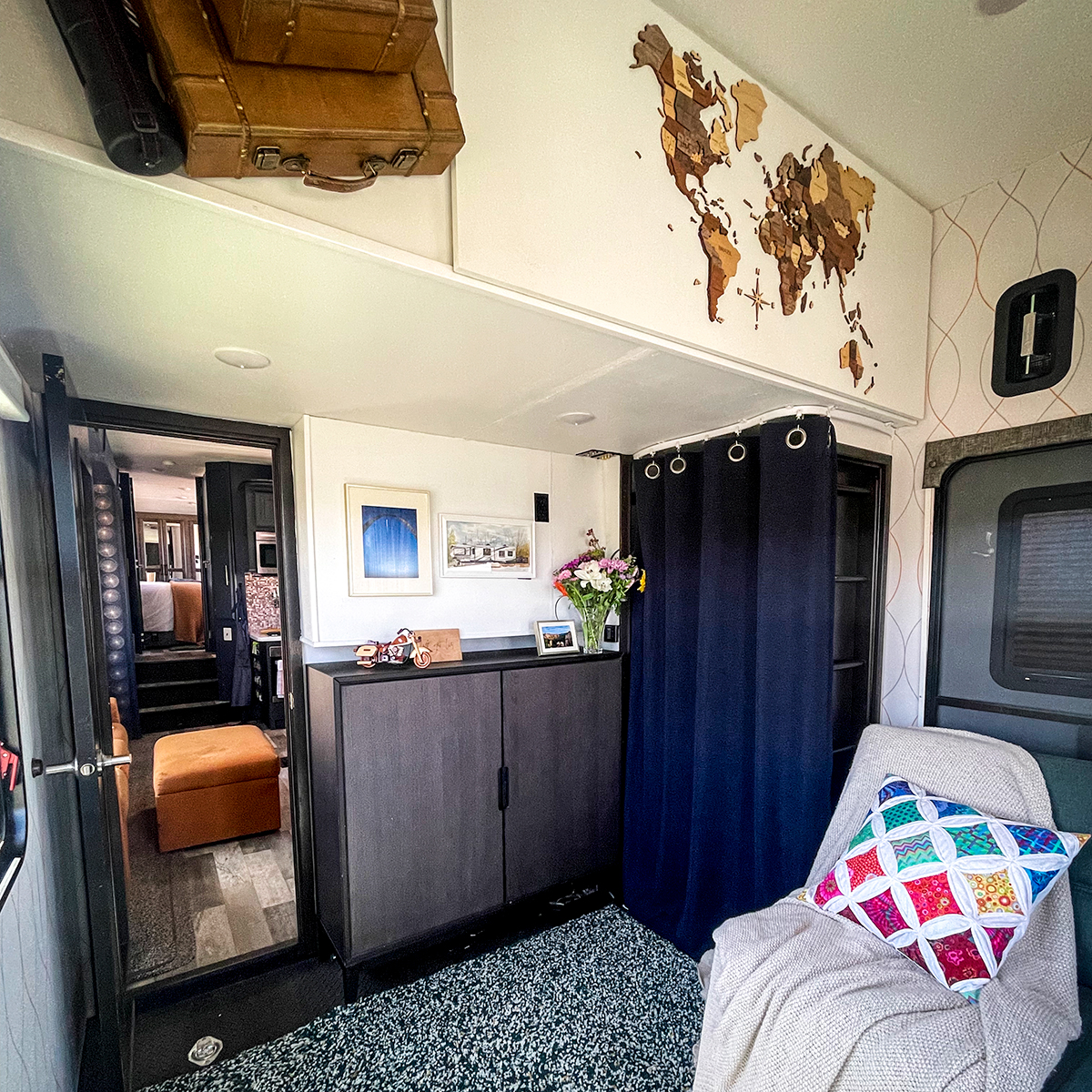
4 Reasons Why We Plan Our Year of Travel In Advance
Want to see where we've been so far and where we're headed next? View our past and current yearly travel schedules here.
1. We both work full-time and require an internet connection to do our jobs.
We have a pretty good system in place that includes data plans for AT&T, T-Mobile, and Verizon, so we have a lot of options. Even still, we have to know in advance that we are traveling to an area with a strong cell signal and reasonable upload and download speeds.
2. Our RV is a large 43-foot 5th wheel.
Many campgrounds and RV parks simply can't accommodate larger RVs. We are also limited by the size and condition of roads leading to some campgrounds and boondocking destinations.
We like knowing in advance that we will be able to get to our destination and that once we arrive, there will be room for us.
3. RVing and camping are popular activities at the moment.
In recent years, this country has seen a HUGE increase in the number of people traveling and camping in RVs. This means that if you wait too long to reserve a space at any given destination, there's a good chance everything will be booked.
I’ve waited with bated breath, my finger poised over the “make a registration” button, for a registration window to open so I could snag one of the few spaces large enough to accommodate us in an amazing-looking campground and still not be able to secure a spot for the length of time we want to be there.
But, most of the time planning in advance gets us the space we want in the campgrounds we want to visit, so we keep doing it.
4. The planning process takes a considerable amount of time.
On average, planning our year of travel, including making reservations and shoring up travel details, takes me about 40 hours.
I prefer to do it all at once and then just relax and enjoy the year.
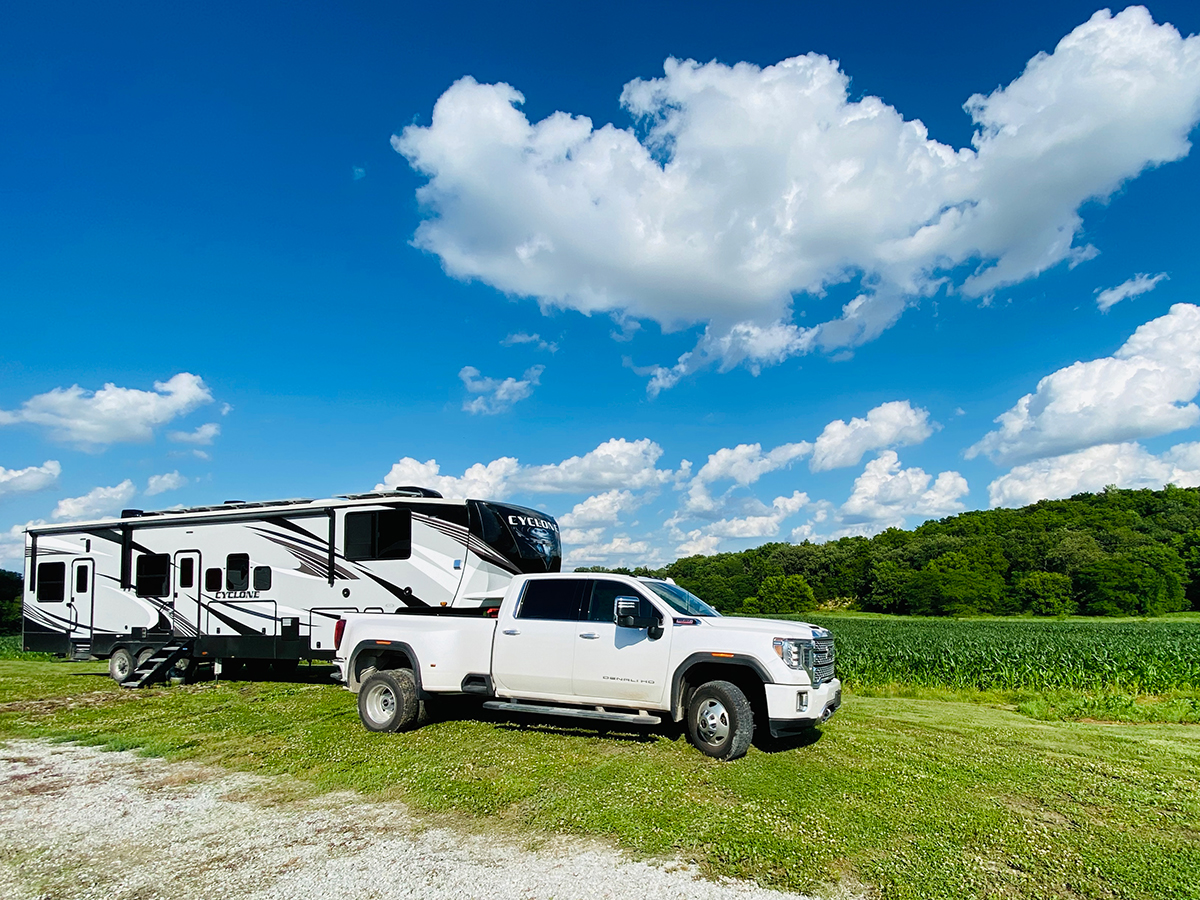
How We Plan a Year of RV Travel
Even though I make our travel plans a year in advance, I always leave some wiggle room in there so we can change our minds from time to time, which we sometimes do.
What follows is a bit of insight into my process, some of the tools I use, and a handful of tips about how to plan a year on the road.
#1. Organize the Entire Year of Travel Around Specific Priorities
Understanding what our main priorities are for the year is probably the most important consideration for me when planning our itinerary.
For example, when making our 2022 travel plans:
- I knew we wanted to spend the first part of the year in San Diego and be back in Colorado for some important events in May.
- After determining where we wanted to park ourselves in Southern California and for how long, I filled in the gaps between leaving SoCal and arriving in Colorado.
- The "in-between" destinations were influenced by the priorities of staying where we wanted to stay in California and getting back to Colorado by early May. Because we wanted to stay in an expensive resort campground in San Diego for 7 weeks, we balanced out the budget by boondocking and staying in a couple of relatively inexpensive campgrounds on the journey back to Colorado.
Besides specific destinations, other priorities influence the plan. After moving around a lot in 2021, we decided that moving less often was a priority for 2022.
As a result, I chose locations central to many places we might want to visit and RV parks where we could stay for 3-7 weeks at a time. This eliminated most State Campgrounds, which we love, but which also generally have a 14-day limit.
Our 2023 travel plan reflects a completely different set of priorities.
We initially determined to spend the summer in Maine. After planning the entire year around that destination, we looked at the itinerary, which included several long stretches in RV Resorts, and determined that we wanted to spend less time in resorts and more time boondocking and in State Parks.
That decision was based in large part on wanting to control our budget, which is its own priority and worthy of its own spot on this list.
#2. What's the Year's Travel Budget?
There is a tremendous budgetary range amongst full-time and part-time RVers. You can easily spend between $1-2k a week at an amenities-rich RV Resort. Or, you can boondock for free.
In between those two options are RV parks and state campgrounds that run anywhere from $5 - $75 a night (or more), often with varying degrees of hookup options (water, sewer, and electric).
So, having at least a loose idea of how much we want to spend in a year is a major influence on our choices.
And that brings me to the next consideration in RV travel planning…
#3. Full Hookups, Some Hookups, or No Hookups?
Campgrounds range from full hookups to partial hookups to no hookups (dry camping).
- Full hookups = the ability to connect your RV to city water, sewer, and electricity.
- Partial hookups usually means water and electric, but can sometimes mean electric only or water only.
- Dry camping and boondocking = no hookups at all.
What’s the difference between dry camping and boondocking?
Dry camping refers to camping at an organized campground that doesn’t include any hookups. Boondocking refers to camping on public land, or on private land that’s open to boondockers. It involves showing up to an open piece of land, usually BLM land, and finding a place to camp. Read more about boondocking here.
Some RVers, both full-time and part-time, boondock almost exclusively. Others only stay at full-hookup parks. We tend towards a mix of everything.
There are a lot of conveniences that come with an amenities-rich RV park! But it's also nice to know that we have what it takes to stay at campgrounds with partial or no hookups.
- In addition to solar power, we have a 100-gallon fresh water tank, and waste tanks that hold a total of 180 gallons of waste.
- In a few years of living full-time in an RV, we’ve learned that we can last almost 2 weeks before having to dump our waste tanks and fill our fresh water supply.
- If we have sun, we have plenty of power. If we don’t have sun, we have a generator to charge our batteries.
- We have a portable waste tank in the bed of our truck that we can use to empty our RV waste tanks and collapsable containers that we use for fresh water. This allows us to dump and refill our fresh water supply while leaving the trailer where it is.
Living in a rig that's so self-contained means we have the freedom to let other priorities, like budget and location, dictate our choices. Our travel decisions are dictated by where we want to stay more than where we have to stay.
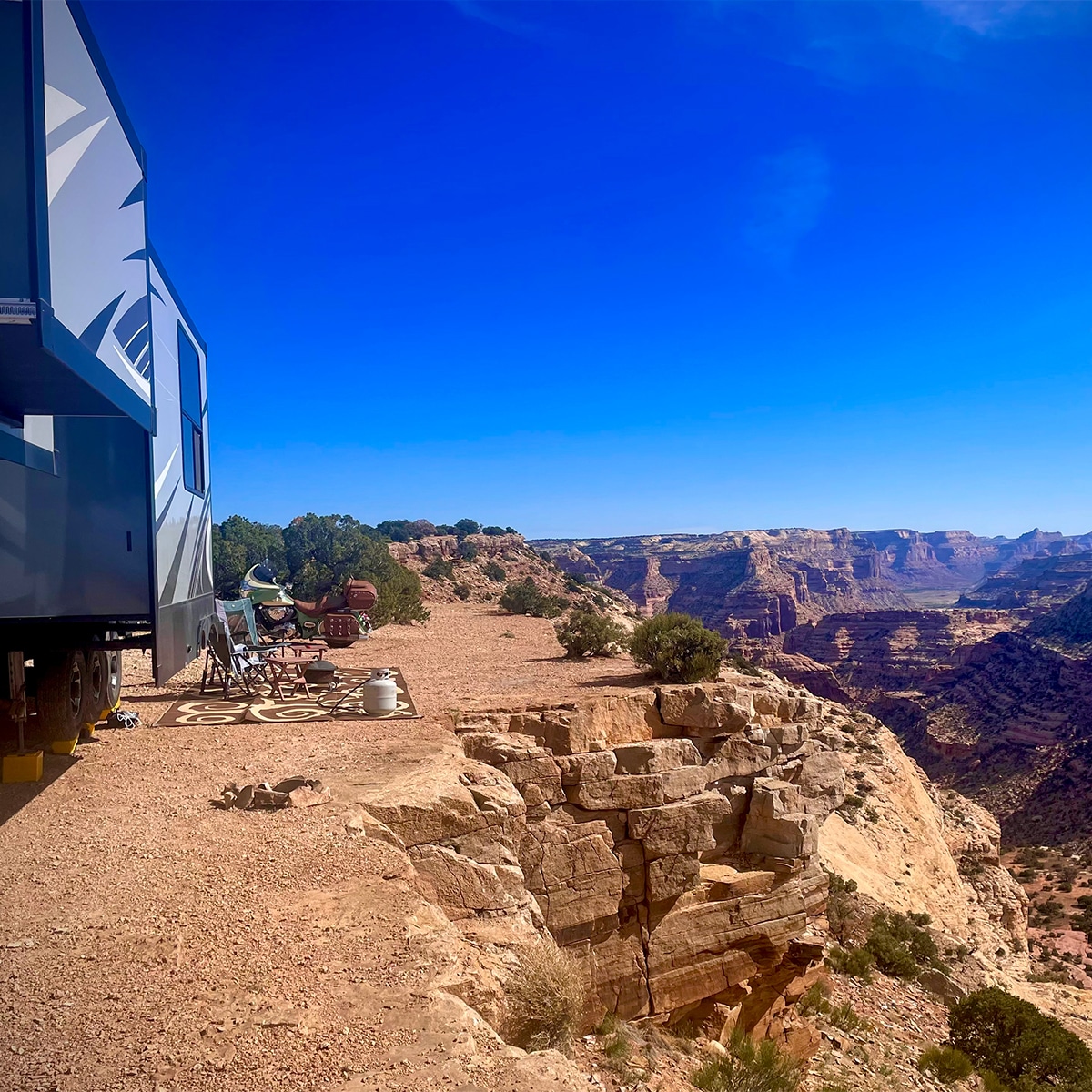
#4. Internet and Cell Service.
Our livelihoods depend on being connected to the internet, so planning the year includes a considerable amount of time determining whether the signal strength, upload, and download speeds will be strong enough on one of those networks to get the job done.
As Steve explained in detail in the March 2022 issue of Let’s Get Lost, our internet setup includes data plans with AT&T, Verizon, and T-Mobile AND the ability to switch between them seamlessly.
On top of that, earlier this year we purchased the equipment to connect to Starlink and it’s really changing the game for how I plan next year's travels.
Starlink provides satellite internet connection across the US. At the moment, Starlink works best in remote, unpopulated areas. These are often the kinds of places that were off-limits to us because of a limited, or nonexistent, cell signal.
Where we run into problems with our Starlink connection is in populated areas that are oversubscribed, or in places with a lot of very tall trees that block the signal. So, while we’ve scaled back on the types of plans we have with AT&T, Verizon, and T-Mobile, we’re still using them.
Our hope is that as the number of Starlink satellites increases, the signal will improve even in forested or densely populated areas. Until then, it’s allowing us to add locations to next year’s itinerary that have previously been off-limits. 👏
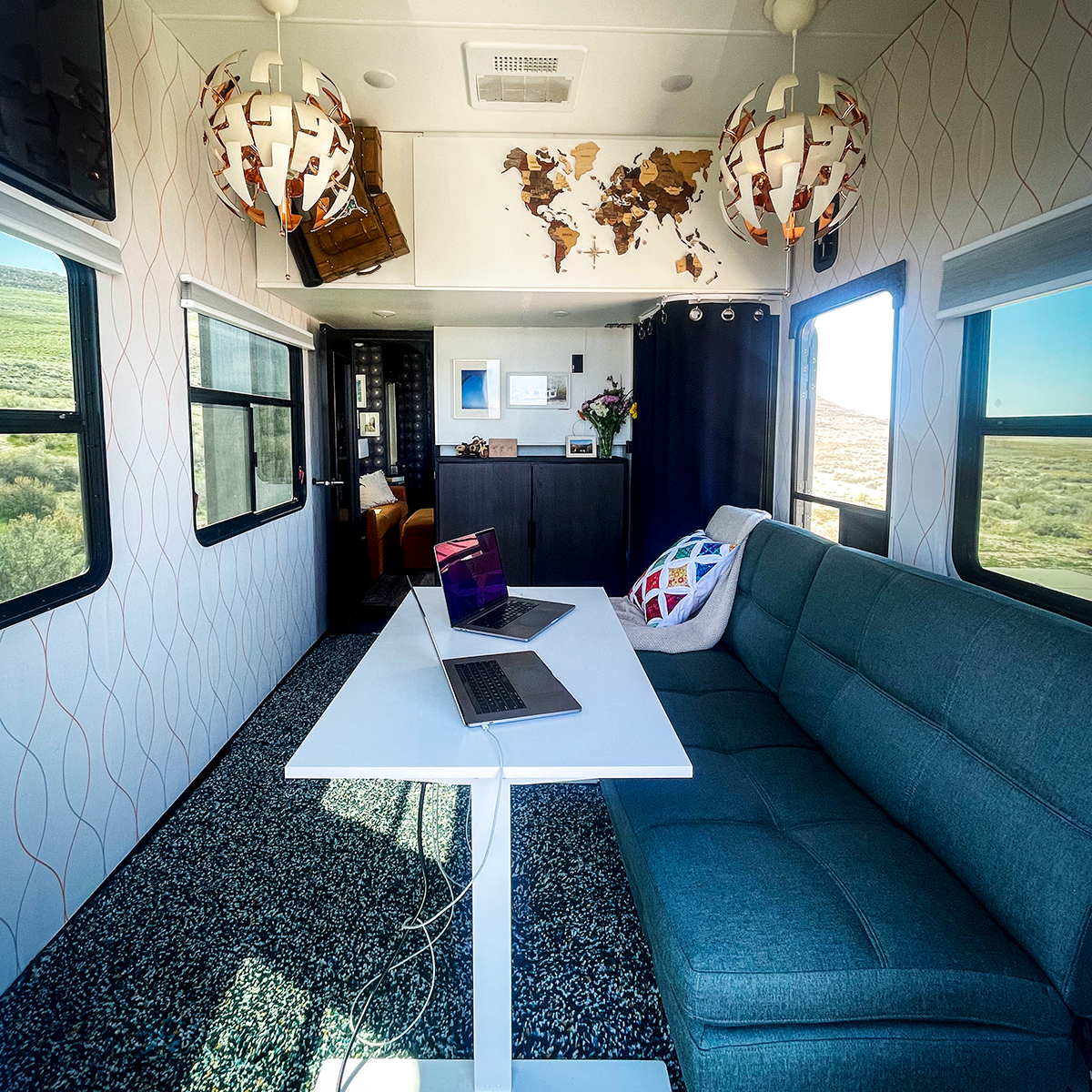
#5. Trusting my Intuition.
One of the things we like the most about full-time RV life is the variety of experiences it provides. We love being in a busy RV resort with paved roads and lots of activity one week and then traveling over miles of dirt roads to isolate ourselves on the edge of a canyon or deep in a forest the next.
Each campground and boondocking location has a different kind of energy… There are places in which we feel at home and others that we never fully relax into.
Deciphering those difficult-to-identify qualities that make a place feel like “us” is challenging, especially when we've never been there. There are certain tangible qualities that we’ve identified, but mostly I’m learning to trust my gut instinct.
For example, when making travel plans for 2023, I spent some time searching for a place to spend a couple of weeks somewhere halfway between Memphis and Colorado. New Mexico seemed the obvious choice and I found a state campground in an excellent location with many positive reviews.
While trying to choose a campsite, I noticed a sick feeling growing in the pit of my stomach. I don’t know exactly why, but I just don’t think we'll like it there. Rather than ignoring my instincts and pressing on, I moved on in my search and found a different option that I feel great about.
There is a quality of experience that’s similar in all the places we’ve loved and in all the places we’ve disliked. It’s not dependent on things like paved or unpaved roads, the geography and terrain, or how remote or central the location happens to be. It’s about how we feel being there.
It's about building the kind of intuition that's based on past experience and trusting it. (And having some self-compassion when it steers us wrong.)
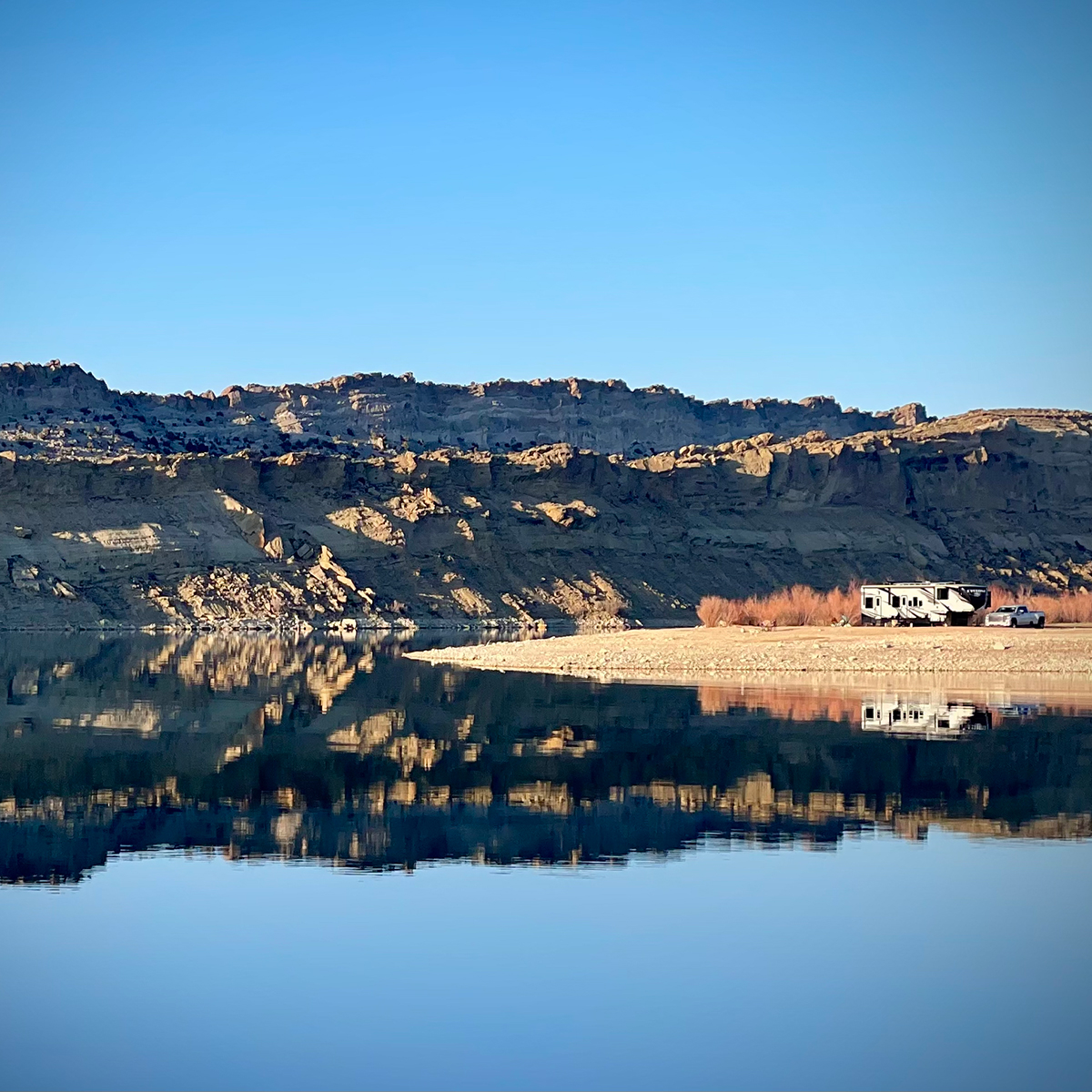
RV Travel Planning Tools and Resources
One of the most valuable resources when I'm planning out our travel itinerary is information shared by fellow travelers. When looking at an area I usually do a google search to see if I can find any inside tips from people who have been there before. For example, this list of the best places to visit in the USA in November includes several fantastic suggestions for places we'll want to visit in the future.
- Campendium. The bulk of my time searching for campgrounds and boondocking locations is done on Campendium. The information in the reviews from other RVers is pure gold.
- The Dyrt. Another user reviewed site with tons of campgrounds and other resources.
- Campsite photos. I use this site a lot when I'm trying to select a good space for us at a particular campground.
- Harvest Hosts. Harvest Hosts is a network of farms, wineries, breweries, restaurants, golf courses, and other businesses who allow RVers to park overnight. We've used Harvest Hosts many times while traveling across the country. In most cases it's a much better alternative to parking lots and rest stops.
- RV Dumps. A comprehensive nation wide map of dump stations across the US.
- Rootless Living. I've been a subscriber to this RV magazine since we moved into our RV, and this year I became one of their contributors. Over the years, I've gotten a ton of useful information from this magazine including travel tips and campground recommendations.
One Final RV Travel Planning Tip!
I keep a running list, organized by state, of campgrounds that we might want to visit someday. This list is a way for me to capture places that I see on Instagram, RV magazines, websites, and from other campers' personal recommendations.
Before adding a campground to my list, I do a quick check to see if it can accommodate a 43-foot trailer and if there is a reasonable expectation that we'll have a cell connection or Starlink access.
This way, I know that every campground on the list meets the two most important requirements for us.
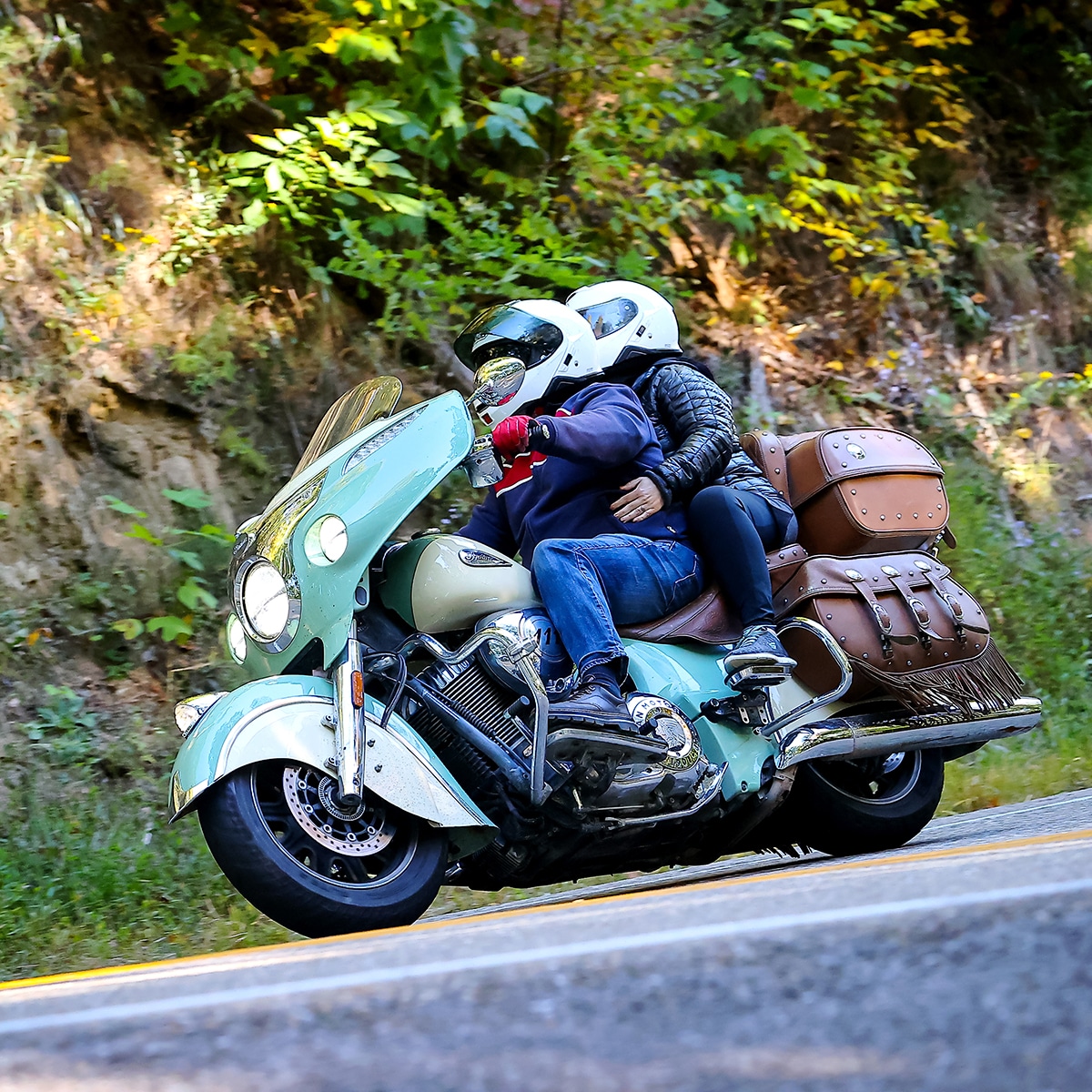
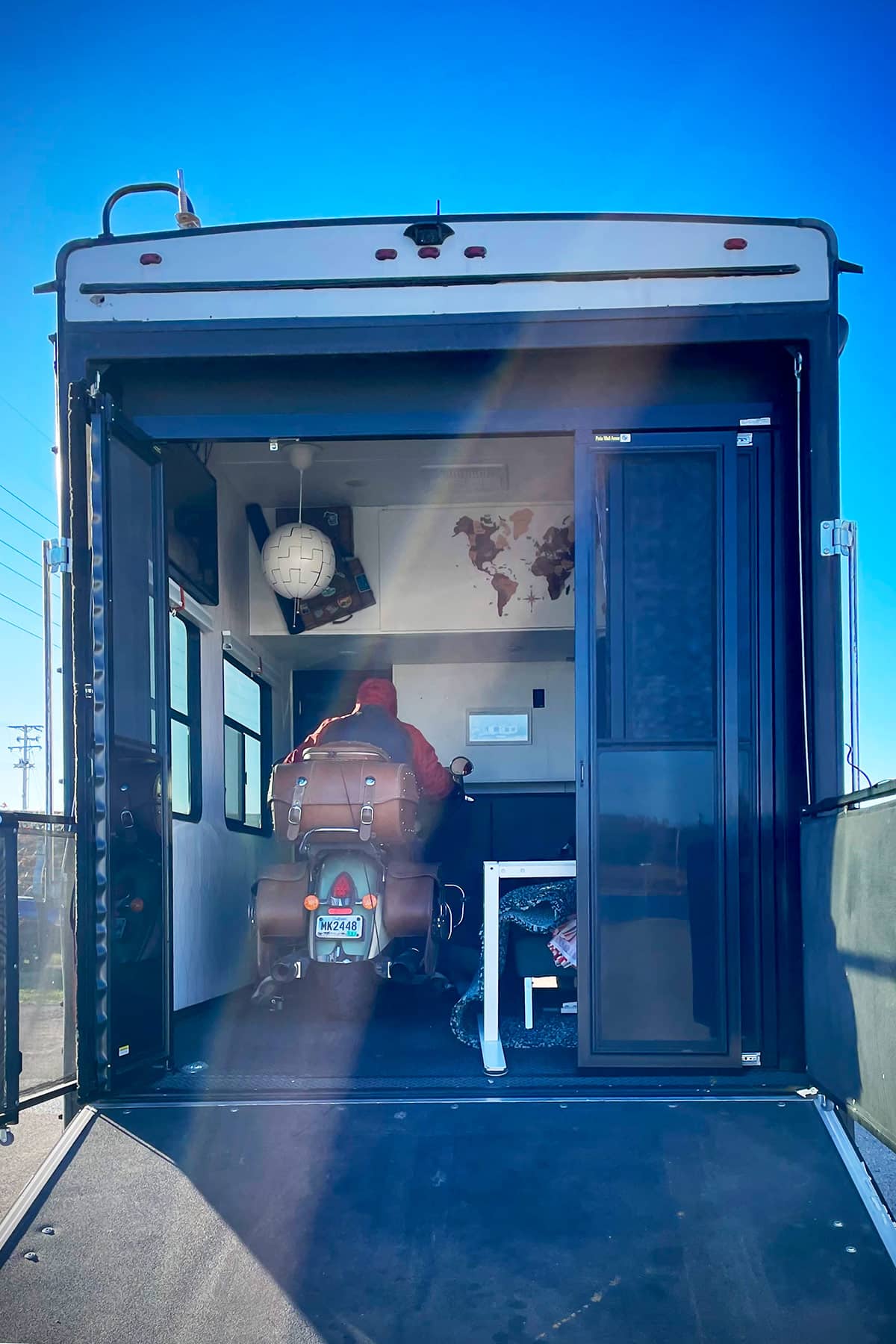

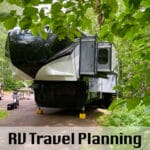
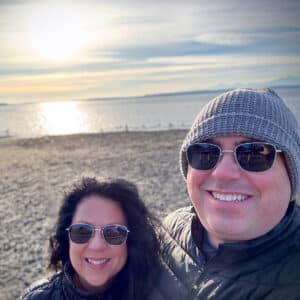
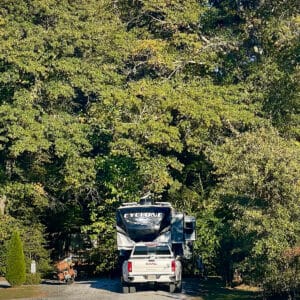
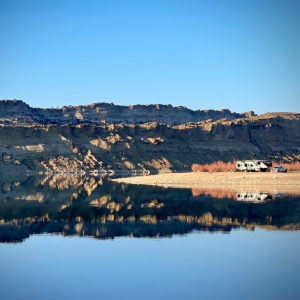
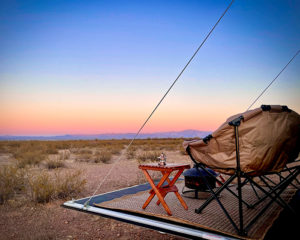
Rick says
Just a quick question, where are you putting motorcycles? I’d love to see a photo of your rig ready for the road!
I was looking at a recipe and found
Your full timer part. We’ve had our 24’ Jayco TT for almost 20 yrs now. It’s been parked more than used. I found with the recessions the parks were being overrun buy many down-on-they’re-luck families,probably no fault of their own, but sad none the less.
I’ve owned 3 Harleys in the past and wish I had them while camping too.
RebeccaBlackwell says
Hi Rick! Nice to meet you! We only have one motorcycle which rolls into the "garage" of our toy hauler on travel days. I added a photo to the end of this post of my husband driving the bike into the garage. The photo doesn't show this, but we have a wheel chock bolted into the floor that the front tire locks into. We also strap the bike down to metal tie down hooks on the garage floor. And even after all that, we've had mishaps that have caused the bike to fall over while traveling and that is always a bummer. One time the leaf springs on the trailer broke and we didn't know it until we stopped for the day. When we opened everything up, we saw that the extra bouncing of the back of the trailer had caused the wheel chock to pull completely out of the floor. It was quite the mess. 🙂 While we're parked, the garage is my husband's office or, if people are staying with us, a guest room, and we usually park the bike under the front of the RV. We generally pull a cover over it unless the weather is nice and we're riding it often.
Finding great parks can take a substantial amount of time. I understand your frustrations. I am still working out our plans for this year - I'm maybe 90% of the way there but really struggling to fill some gaps. Sometimes the travel planning comes together easily and other times it feels like there are constant road blocks. We really love to stay in State parks. They are often in really beautiful areas, camping spots are generally spaced out, and because there's usually a 2 week time limit, almost everyone there is on vacation. But, you really have to plan ahead to get a spot, especially in the most popular parks.
I don't know if that answers your questions, but please let me know if you have any others!